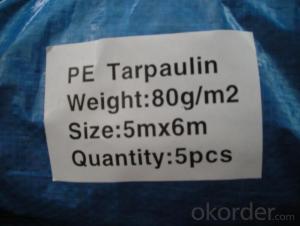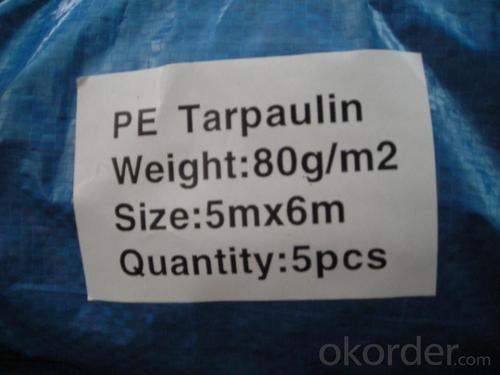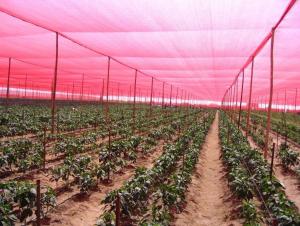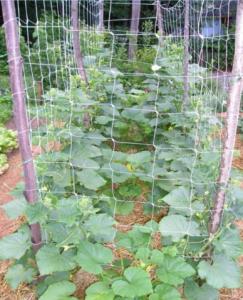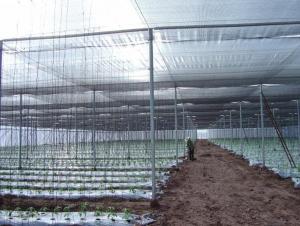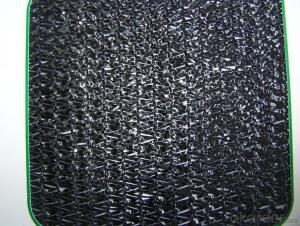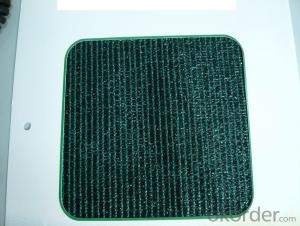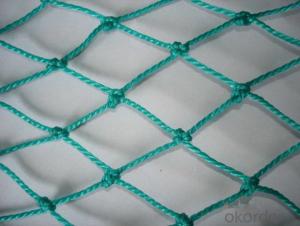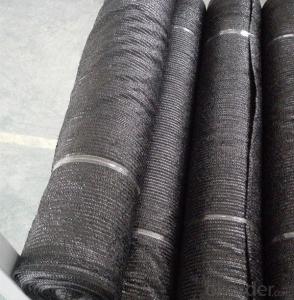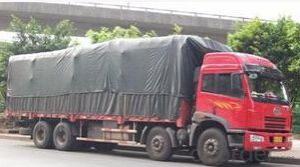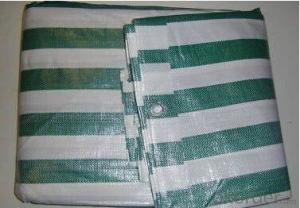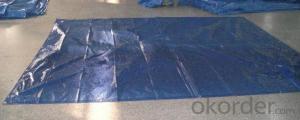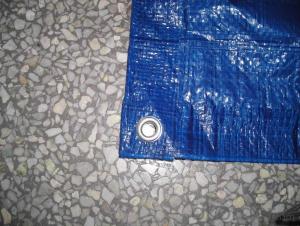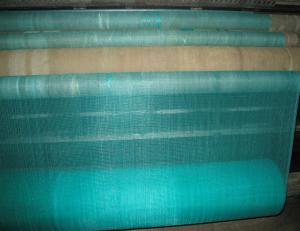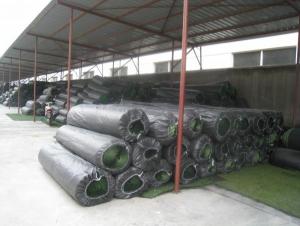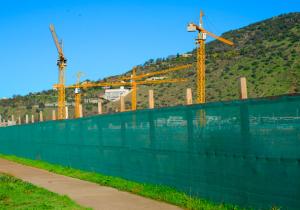Waterproof PE/PP Tarp Plastic Fence Net Coated Tarpaulin for Truck
- Loading Port:
- Qingdao
- Payment Terms:
- TT OR LC
- Min Order Qty:
- 3000 m²
- Supply Capability:
- 3000000 m²/month
OKorder Service Pledge
OKorder Financial Service
You Might Also Like
PE Tarpaulin Waterproof PE/PP tarps coated tarpaulin for truck
Specification Waterproof PE/PP tarps coated tarpaulin for truck:
Weight: 70g/m2-300g/m2
Density / sq. inch :7*6, 7*7, 8*7, 8*8, 10*8, 10*10, 12*12, 14*14, 16*16
Color: Any color available
Size: 2*3m, 3*4m, 4*6m….. any size available
Denier: 750-3000 Denier
UV. FR treatment also available
PE fabric both sides laminated, reinforced by PP rope in hem on all around edges. Aluminum eyelets every 1 meter or 3’ or 1yd interval (750px, 1250px interval also available).
Application Waterproof PE/PP tarps coated tarpaulin for truck
PE Tarpaulin can be widely used in as the cover as well as other usage. It can be used in industrial, agricultural, garden and home.
Industrial Waterproof PE/PP tarps coated tarpaulin for truck: Covers for general use, scaffoldings in construction sites, underground sheets,
Covers for truck, cars, boats, containers, warning tapes,
Covers for materials, roofs, road repair sites, fences
Agricultural Waterproof PE/PP tarps coated tarpaulin for truck: Covers for timber, hay, cotton and all kinds of crops
Covers for daring crops
Home/Garden use: Covers for garden, backyard use
Covers for furniture
Gazebo tentd, dining canopies, swimming pool covers
- Q: What are the disadvantages of using plastic nets?
- There are several disadvantages of using plastic nets. Firstly, plastic nets are not biodegradable and can take hundreds of years to decompose, contributing to environmental pollution. Secondly, plastic nets can entangle and harm wildlife, particularly marine animals, leading to injuries or even death. Additionally, plastic nets can release microplastics into the environment as they degrade, further exacerbating the plastic pollution problem. Lastly, plastic nets are not as strong or durable as other materials like metal or natural fibers, making them less suitable for certain applications where strength is crucial.
- Q: How do plastic nets affect waste generation?
- Plastic nets can contribute to waste generation as they are often used in packaging, agriculture, and fishing industries. These nets are often discarded after use and can end up in landfills or as litter in the environment. Since plastic takes hundreds of years to decompose, these nets can persist in the environment, adding to the overall waste accumulation. Additionally, plastic nets can entangle and harm marine life, further exacerbating the negative environmental impact.
- Q: Are plastic nets suitable for crab traps?
- Yes, plastic nets are suitable for crab traps. They are lightweight, durable, and resistant to corrosion, making them an ideal choice for trapping crabs. Additionally, plastic nets are less likely to entangle or harm the crabs compared to other materials like metal or wire.
- Q: How do plastic nets affect wildlife?
- Plastic nets can have a detrimental impact on wildlife. They can entangle animals, causing injuries, suffocation, and even death. Marine animals like turtles, dolphins, and seabirds are particularly vulnerable to entanglement in fishing nets. Additionally, plastic nets can alter ecosystems by trapping smaller organisms, disrupting food chains, and damaging habitats. The accumulation of these nets in the environment also contributes to plastic pollution, further threatening wildlife populations.
- Q: How do plastic nets impact energy consumption?
- Plastic nets can have both positive and negative impacts on energy consumption. On one hand, plastic nets can contribute to energy savings in certain applications such as agriculture, construction, and packaging industries by reducing the weight of materials needed and facilitating more efficient transportation. On the other hand, the production and disposal of plastic nets require significant amounts of energy, especially when considering the extraction and processing of raw materials, manufacturing processes, and waste management. Additionally, plastic nets can contribute to environmental degradation and climate change, indirectly impacting energy consumption in the long run. Therefore, it is crucial to carefully consider the overall life cycle impacts of plastic nets on energy consumption and explore sustainable alternatives.
- Q: Are plastic nets suitable for outdoor furniture?
- No, plastic nets are not suitable for outdoor furniture as they are generally not durable enough to withstand outdoor conditions and may deteriorate quickly.
- Q: Can plastic nets be used for birdhouses?
- Yes, plastic nets can be used for birdhouses. They can be used to create a protective barrier around the birdhouse, preventing larger predators or unwanted birds from entering while still allowing the smaller birds to access the house. Plastic nets are lightweight, durable, and can withstand outdoor conditions, making them a suitable material for birdhouse construction.
- Q: How do plastic nets help in preventing weed growth?
- Plastic nets help in preventing weed growth by creating a physical barrier that blocks sunlight and hinders weed seeds from germinating and growing. Additionally, these nets also prevent weed seeds from being dispersed by wind and birds, further reducing weed growth.
- Q: How do plastic nets compare to metal nets?
- Plastic nets are generally lighter, more flexible, and corrosion-resistant compared to metal nets. However, metal nets tend to be stronger, more durable, and provide better protection against sharp objects. The choice between plastic and metal nets depends on the specific application and required attributes.
- Q: Are plastic nets suitable for use in aquaculture?
- Yes, plastic nets are suitable for use in aquaculture. They are commonly used in fish farms and hatcheries to contain and protect fish, prevent escapes, and facilitate water circulation. Plastic nets are durable, resistant to corrosion, and have a long lifespan, making them an effective choice for aquaculture operations.
Send your message to us
Waterproof PE/PP Tarp Plastic Fence Net Coated Tarpaulin for Truck
- Loading Port:
- Qingdao
- Payment Terms:
- TT OR LC
- Min Order Qty:
- 3000 m²
- Supply Capability:
- 3000000 m²/month
OKorder Service Pledge
OKorder Financial Service
Similar products
Hot products
Hot Searches
Related keywords
